Six Ministries of the Nguyễn dynasty
The Six Ministries (Vietnamese: Sáu bộ, chữ Nôm: 𦒹部; Sino-Vietnamese: Lục bộ, chữ Hán: 六部), or the Six Boards, were the major executive parts of the government of the Nguyễn period Vietnamese state (1802–1945).
History
The Six Boards included:[1]
- Administration (Bộ Lại, 吏部)
- Finance (Bộ Hộ, 戸部)
- Laws (Bộ Hình, 刑部)
- Military Affairs (Bộ Binh 兵部)
- Public works (Bộ Công, 工部)
- Rites (Bộ Lễ, 禮部)
The Six Boards were established in 1802 after Gia Long's coronation, however they were not fully operational until 1830.[2] Each board had a president (Thượng thư, 尚書), supported by two vice-presidents (Tham tri, 參知). In 1826 emperor Minh Mạng added two vice-minister into each board (Thị lang, 侍郎). By the mid-1840s, the six ministries comprised almost 100 people, included secretaries serving on their boards.[3]
Gallery
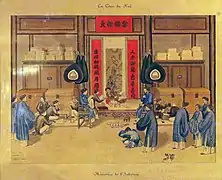
- Ministry of Administration
- (Lại Bộ, 吏部)
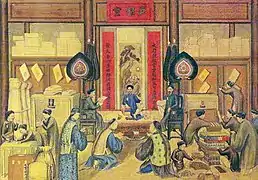
- Ministry of Finance
- (Hộ Bộ, 戸部)
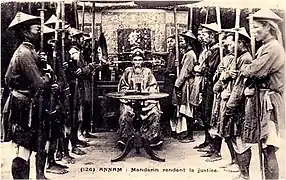
- Ministry of Laws
- (Hình Bộ, 刑部)
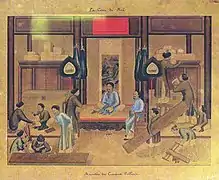
- Ministry of Public Works
- (Công Bộ, 工部)
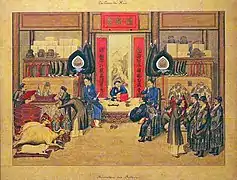
- Ministry of Rites
- (Lễ Bộ, 禮部)
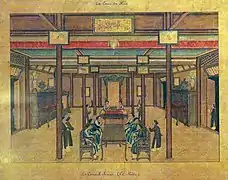
- Privy Council of the Nguyen Dynasty
- (Cơ Mật Viện, 機密院)
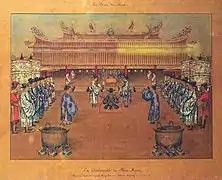 Phục mạng ceremony when mandarins received an edict from the Emperor
Phục mạng ceremony when mandarins received an edict from the Emperor Headquarter of the Privy Council
Headquarter of the Privy Council
References
- Woodside (1988), p. 68–69.
- Woodside (1988), p. 67.
- Woodside (1988), p. 69.
Sources
- Woodside, Alexander (1988). Vietnam and the Chinese model: a comparative study of Vietnamese and Chinese government in the first half of the nineteenth century. Cambridge, Massachusetts: Harvard University Press. ISBN 0-674-93721-X.
This article is issued from Wikipedia. The text is licensed under Creative Commons - Attribution - Sharealike. Additional terms may apply for the media files.
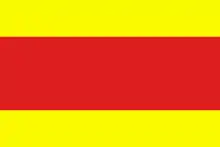
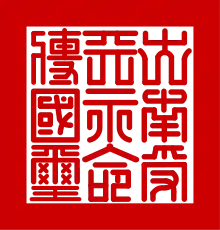
_colour_scheme_-_%C4%90%E1%BA%A1i_Nam_(%E5%A4%A7%E5%8D%97).svg.png.webp)